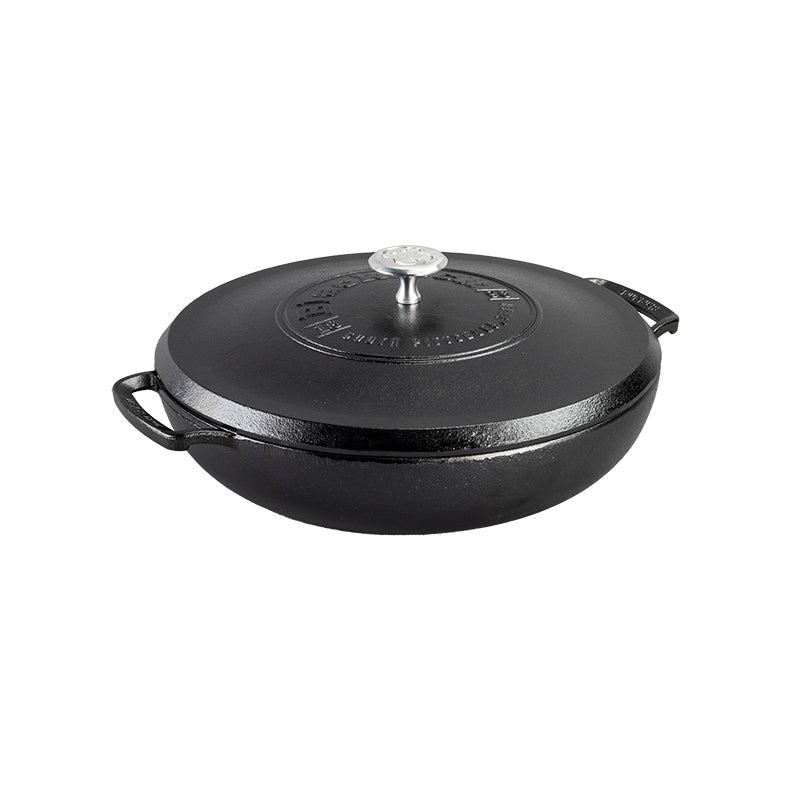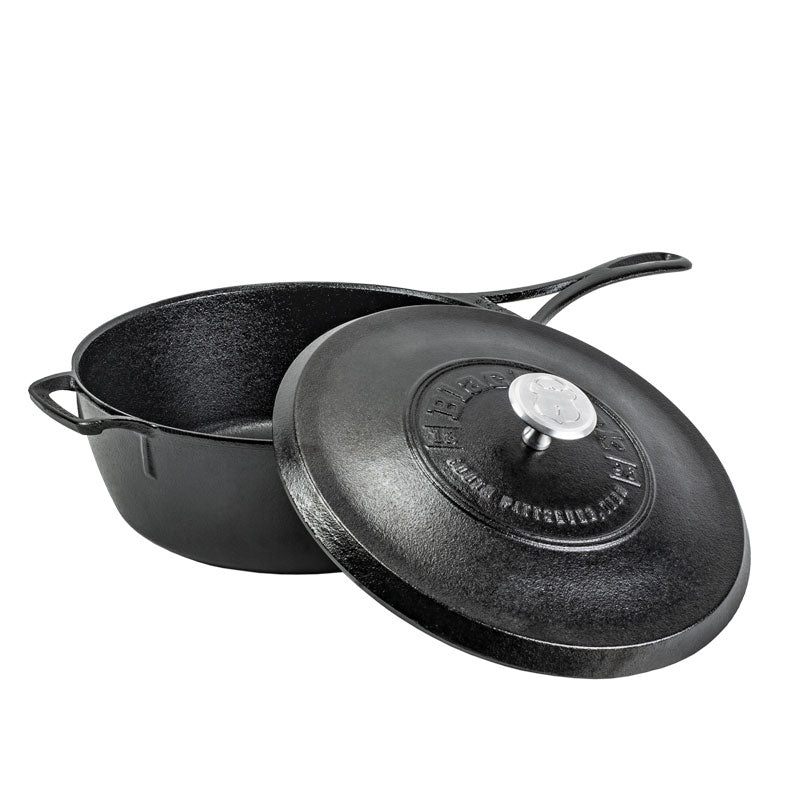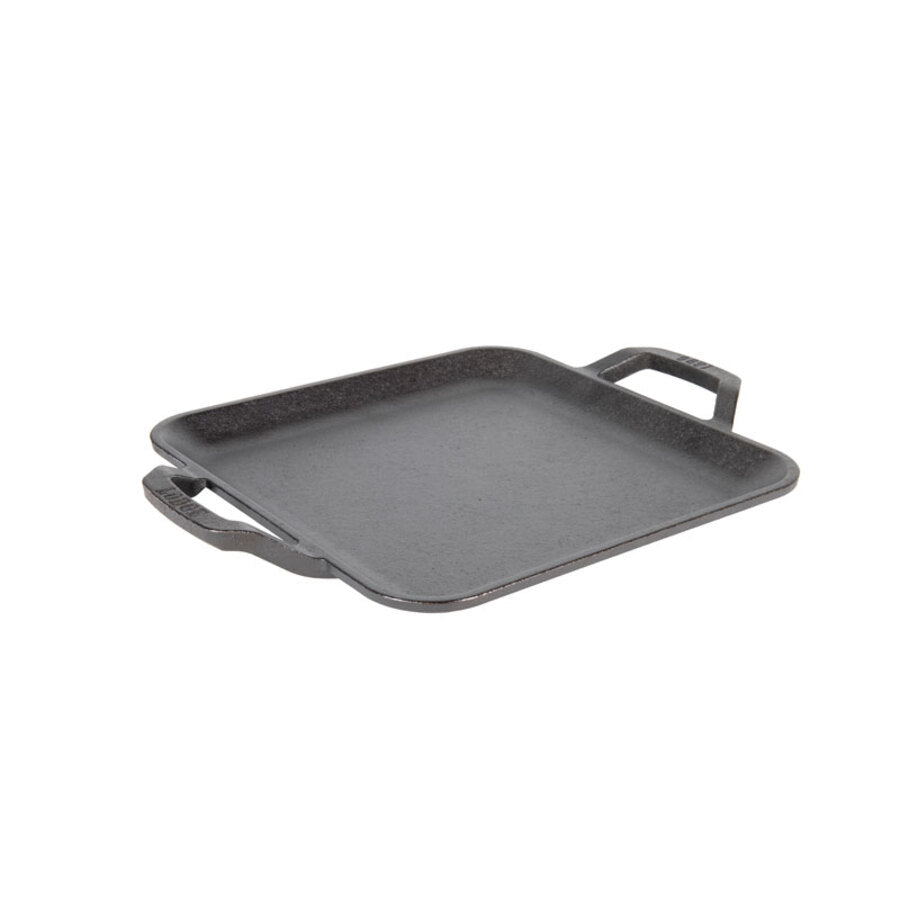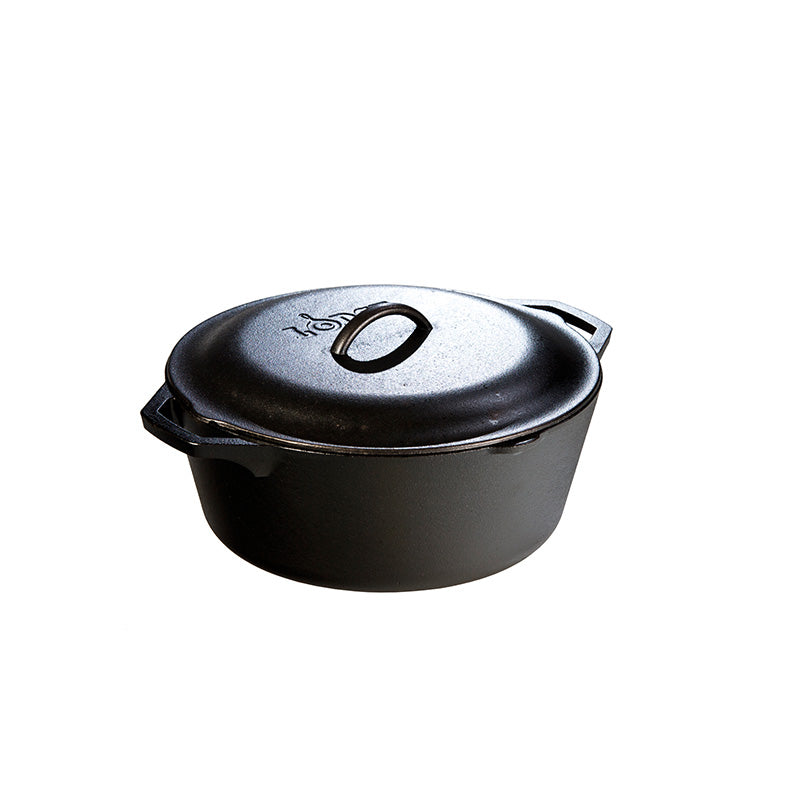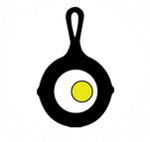How to Cook Potatoes with Cast Iron
All the ways with all the spuds
Some of our very favorite cast iron recipes are also potato recipes (we see you, Smashed Potatoes). And while this common ingredient is forgiving and adaptable, a few small techniques can turn humble potatoes into mealtime gold. Read on to learn how we cook cast iron potatoes with recipes of all kinds.
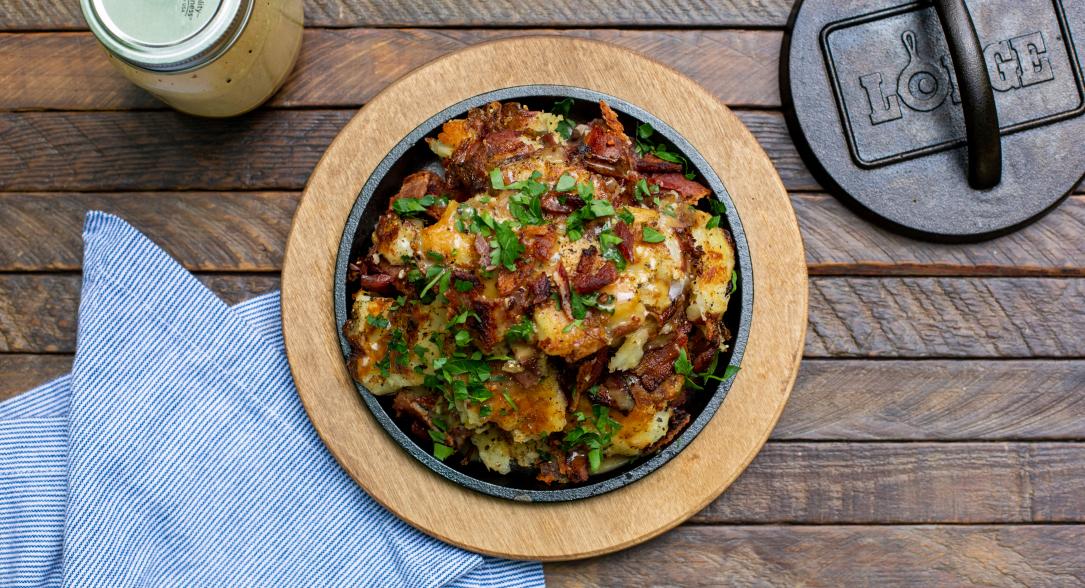
How to fry potatoes in cast iron
This is where a cast iron dutch oven or enameled cast iron dutch oven does some of its best work. To make french fries in cast iron, we start with starchy potatoes like Russets, then get them peeled (optional), sliced, and dunked in cold water to prevent them from sticking together. That said, once the fries have had a nice soak for about an hour, it’s really important to get them as dry as possible. We line a baking sheet with a paper towel and then spread out the uncooked fries, sandwiching them with more paper towels to absorb all that stray moisture.
From here on out, the key is consistency—in both temperature and timing. That’s why we fry in manageable batches so that each fry gets a good dunk in the oil.
Start with a dutch oven that can hold enough oil for dunking (we recommend at least a 6 quart vessel). Fill the dutch oven no more than halfway full with cooking oil. We like to deep-fry our french fries twice: first, at about 325˚F for 3 to 6 minutes. Then, take the fries out and let them relax on a freshly paper towel-lined baking sheet. Right before serving, we fry them a second time at about 375˚F for 2 to 3 minutes.
Remove fries from oil, add to a big mixing bowl, and season while they’re still hot.
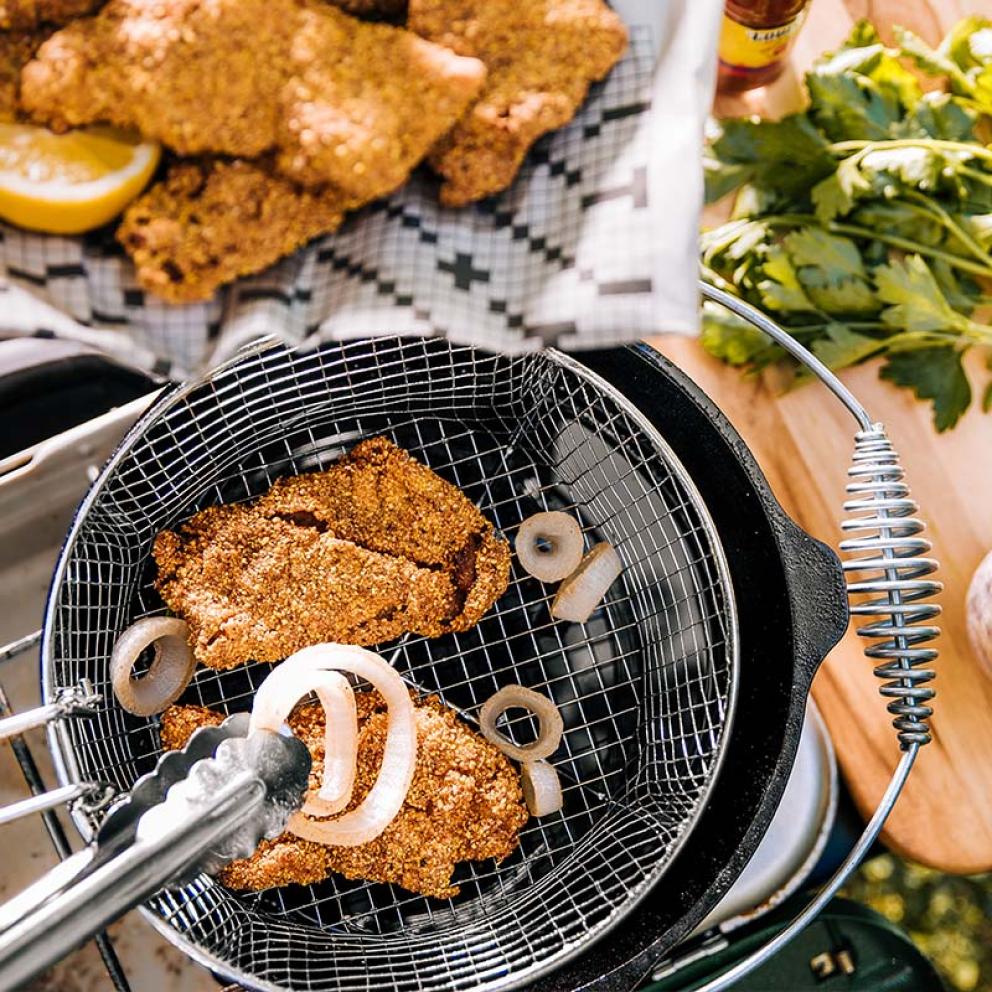
Choosing deep frying oil
Whether you’re making fried chicken, churros, or french fries, the key is to pick a great oil. The perfect fry oil has a high smoke point so that it won’t burn (or worse) at high temperatures. Peanut oil, vegetable, canola, avocado, and sunflower oil are all great options. Olive oil is not recommended for deep frying.
How to make hash browns in cast iron
The key is to start with the right potato! We recommend something starchy like a Russet potato—waxy or new potatoes will turn to mush and won’t get crispy. Fun fact, sweet potatoes make excellent hash browns and can be treated just like a regular Russet!
- Shred your potatoes with a box grater, then rinse them 2-3 times in cold water—the water will start off milky but should run clear by the end. The goal is to get as much starch out as possible for an excellent, crispy hash brown.
- Dump the shredded, rinsed potatoes onto a tea towel, wrap them up and twist all the water out—you won’t hurt them! The more you twist, the crispier the result.
- Preheat a skillet over medium for a few minutes, then add either a mix of 1:1 vegetable oil and butter, or use 100% clarified butter (ghee). You’ll want to get this frying oil hot!
- Then pile on about 3/4 inch of shredded potato across the entire skillet and give it a light press; season all over with salt, pepper, and garlic powder if you have it. After 5 to 7 minutes, you’ll see browning around the edges. This is your sign to flip!
- You can either flip the whole hash brown “patty” or work in sections—either way, it’s going to be delicious. Let this side cook for 3 to 4 minutes, then plate and serve!
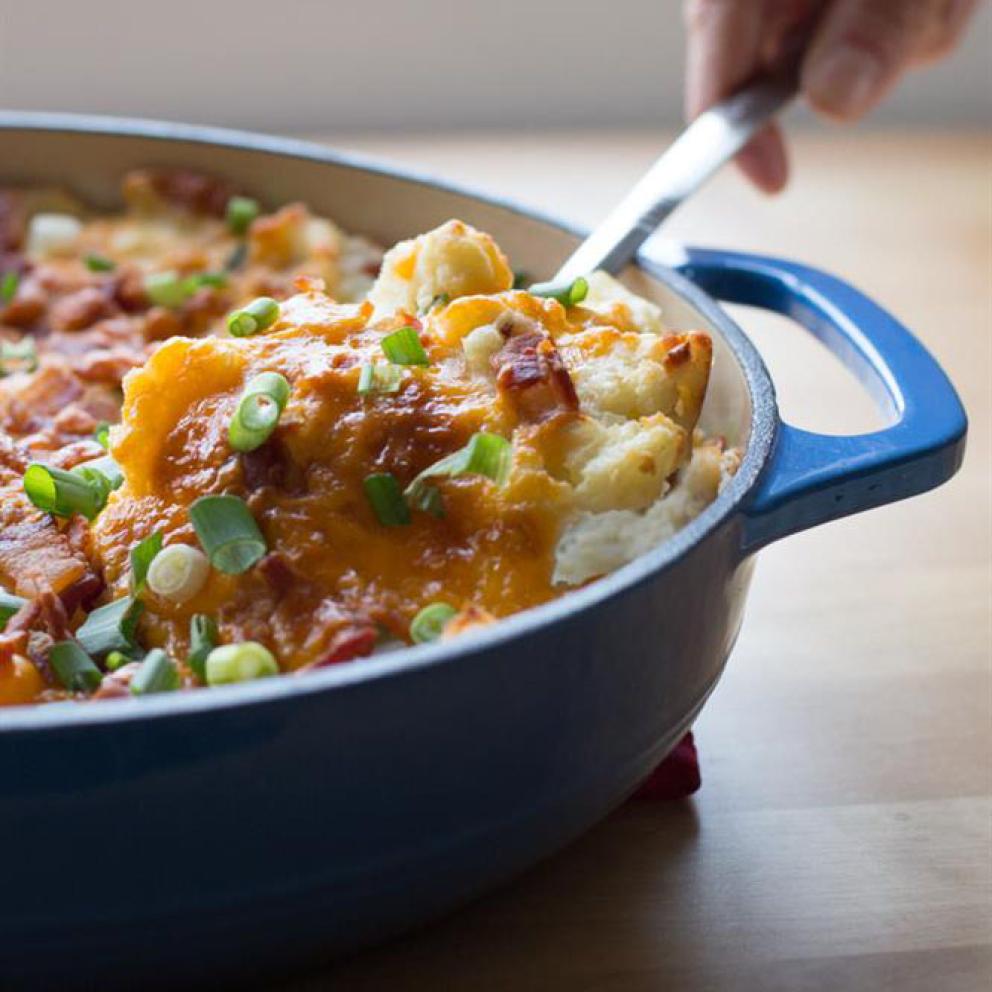
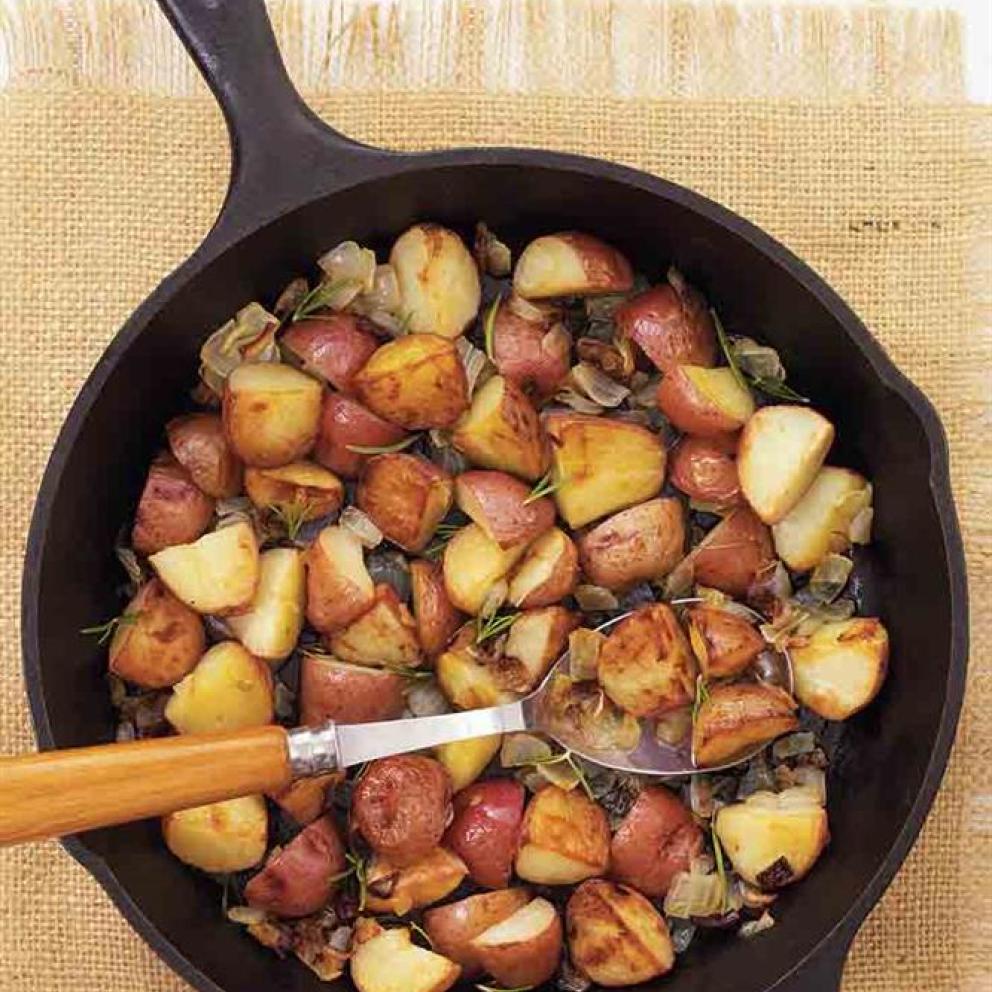
How to bake potatoes
You really can’t go wrong with a simple baked or roasted potato made in a cast iron skillet or baking pan. Peeled or “natural,” chopped up or whole, baking applies consistent heat to your spuds and can help a layered dish like scalloped potatoes come together fully.
Roasted potatoes
For simple roasted potatoes, get your potatoes cut down no bigger than 1 inch pieces. Coat with oil, add your favorite herbs and aromatics, and add it all to a skillet. Bake at 350˚F for 45 minutes to an hour, checking for doneness as you go.
Potato casserole
This one is a holiday favorite: turn your baked into a stuffed potato casserole by adding lots of cheese, seasonings, and flavorful fillings, then add it into a dutch oven, braiser, or casserole pan. We like the classic combo of green onions, bacon, and cheddar, but you can also get creative. Maybe a gruyere, caramelized onion, baked apple combination?
Make a baked potato bar
After baking whole or halved potatoes in the oven (times vary but generally it will take between 45 minutes and an hour at 400˚F), pile them on a warm piece of cast iron and serve with a bunch of fixings for a DIY baked potato bar.
The ultimate baked potato matrix
| Cheese & Dairy | Herbs & Sauces |
Cheddar | Chopped Green Onion |
| Proteins | Vegetables |
Bacon Crumbles | Roasted Broccoli |
How to boil potatoes
As simple as it may sound, boiling potatoes is an opportunity to start a recipe off right. The key here is a lot of water and more salt than feels right. For a pound of potatoes, submerge your prepped potatoes completely so there’s at least an inch of extra water for them to swim around, then add ½ cup of salt to the mix. It may feel like a lot, but this gets every inch of potato properly seasoned before you add to a recipe. We like to start our potatoes in cold water, but adding them to boiling is fine, too!
Choosing, prepping & timing boiled potatoes
For large, starchy potatoes
Peeling is optional, but cleaning is not! After rinsing and scrubbing larger, starchier potatoes (like Yukon Gold or Russets), remove any eyes, peel if desired, and then cut down into 1 to 2 inch pieces. This will help with even cooking!
Cook time: 30-40 minutes depending on size
For small, waxy potatoes
For waxier potatoes (like red or fingerling potatoes), there’s no need to peel or cut before cooking. Just add scrubbed potatoes to your boiling water.
Cook time: 10-20 minutes depending on size
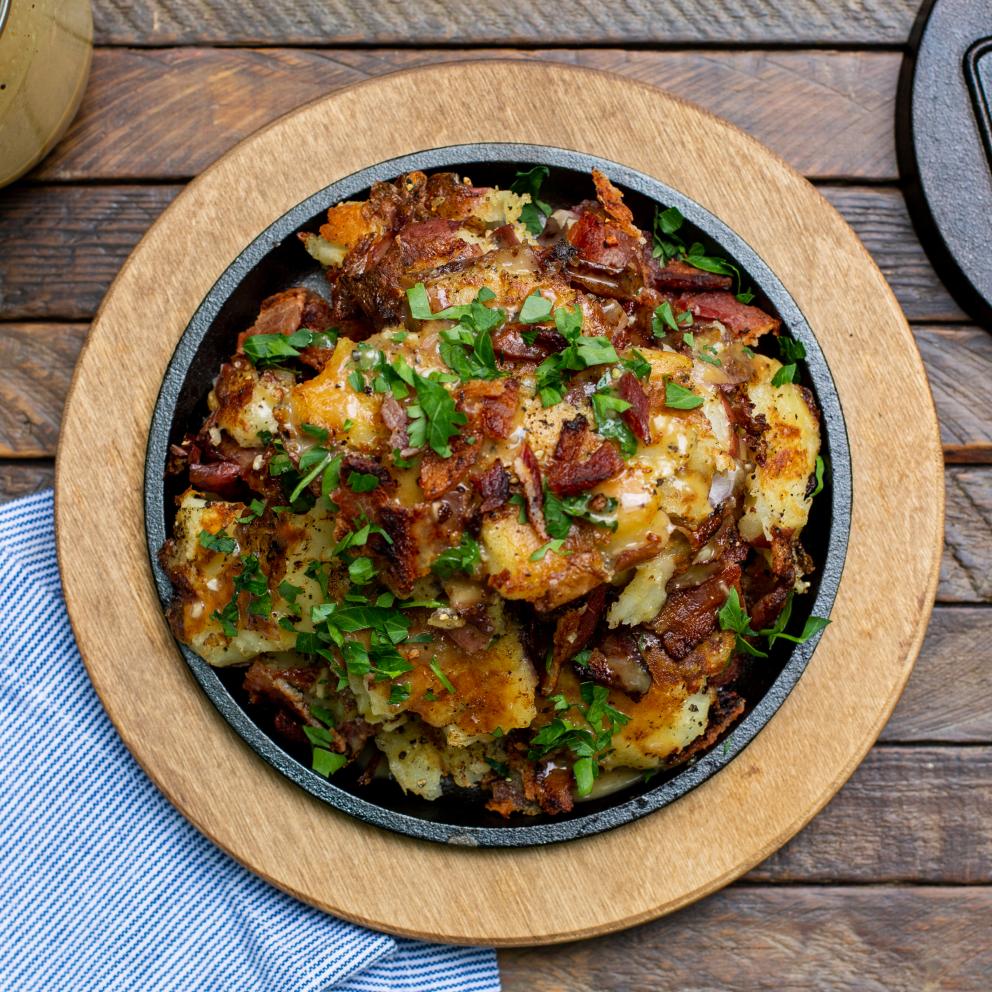
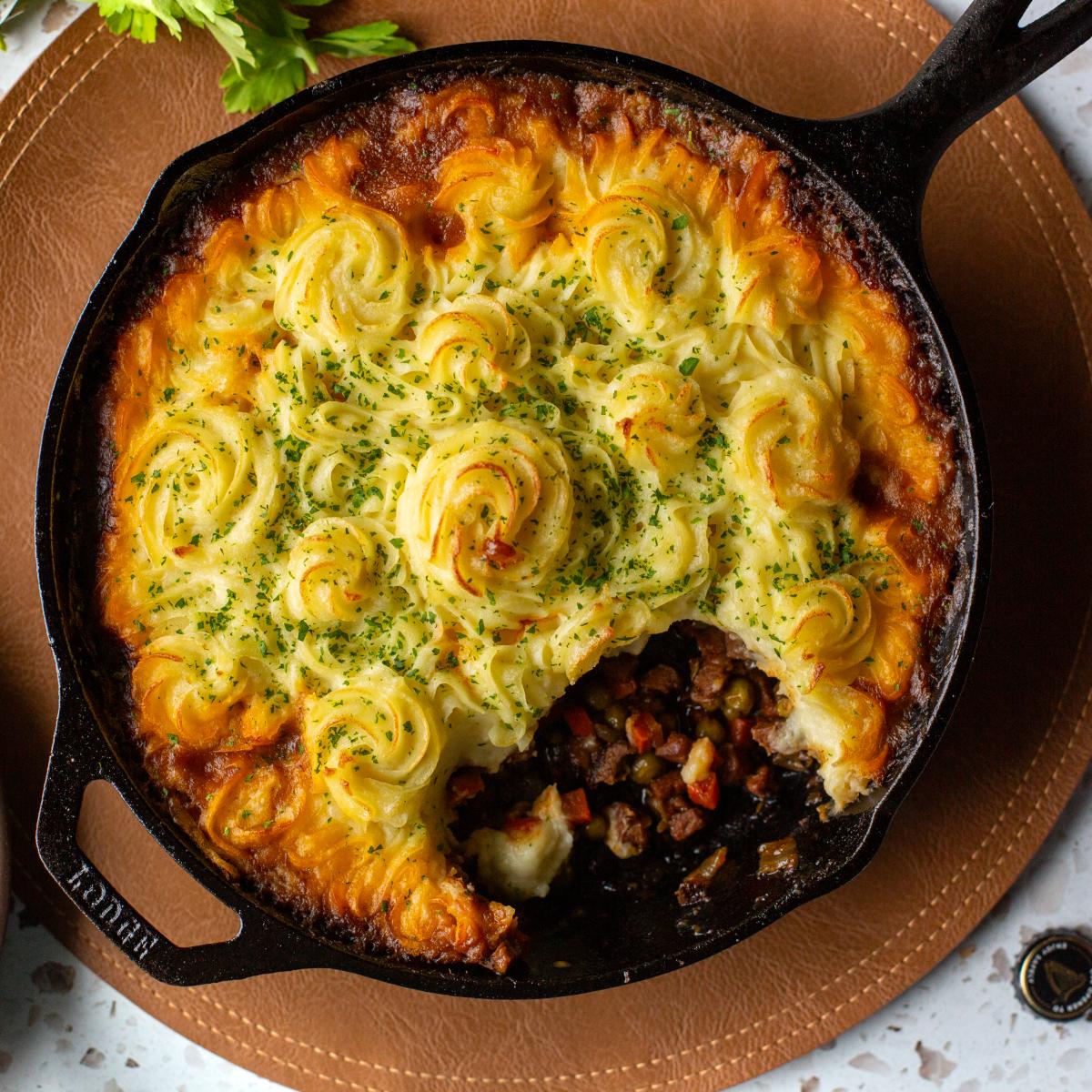
How to use boiled potatoes
Smashed potatoes
Turn out your lightly boiled potatoes onto a hot piece of cast iron with lots of good seasoning, then give them a smoosh. We love this version of smashed potatoes with a warm bacon vinaigrette.
Potato salad
Take those garden gems and turn them into a salad. It’s a tradition around here to add mustard to our salad, but any kind of vinaigrette or dressing will do! Let the spuds shine with simple adds like chopped green onions, fresh herbs, or bacon studs.
Mashed potatoes
The classic, the original, the legend. We like to warm a bit of cream (or buttermilk!) before adding it into cooked potatoes so that it will more fully absorb. And once the mashing is done, consider topping off a Shepherd’s Pie or chicken stew with a layer of mashed potatoes for a crusty-topped one-pan meal.
Roasted potatoes
Boiling potatoes before you roast them means your oven heat is going directly into crisping up the spuds instead of cooking them through. Spread boiled or par-boiled potatoes on a cast iron baking pan or skillet with a generous helping of oil and add parm for a crispy, cheesy crust. Toss them around if you like a craggy, crispy potato.
Take home these cast iron favorites
Shop every spud's favorite cookware: cast iron made for tater'ing.
